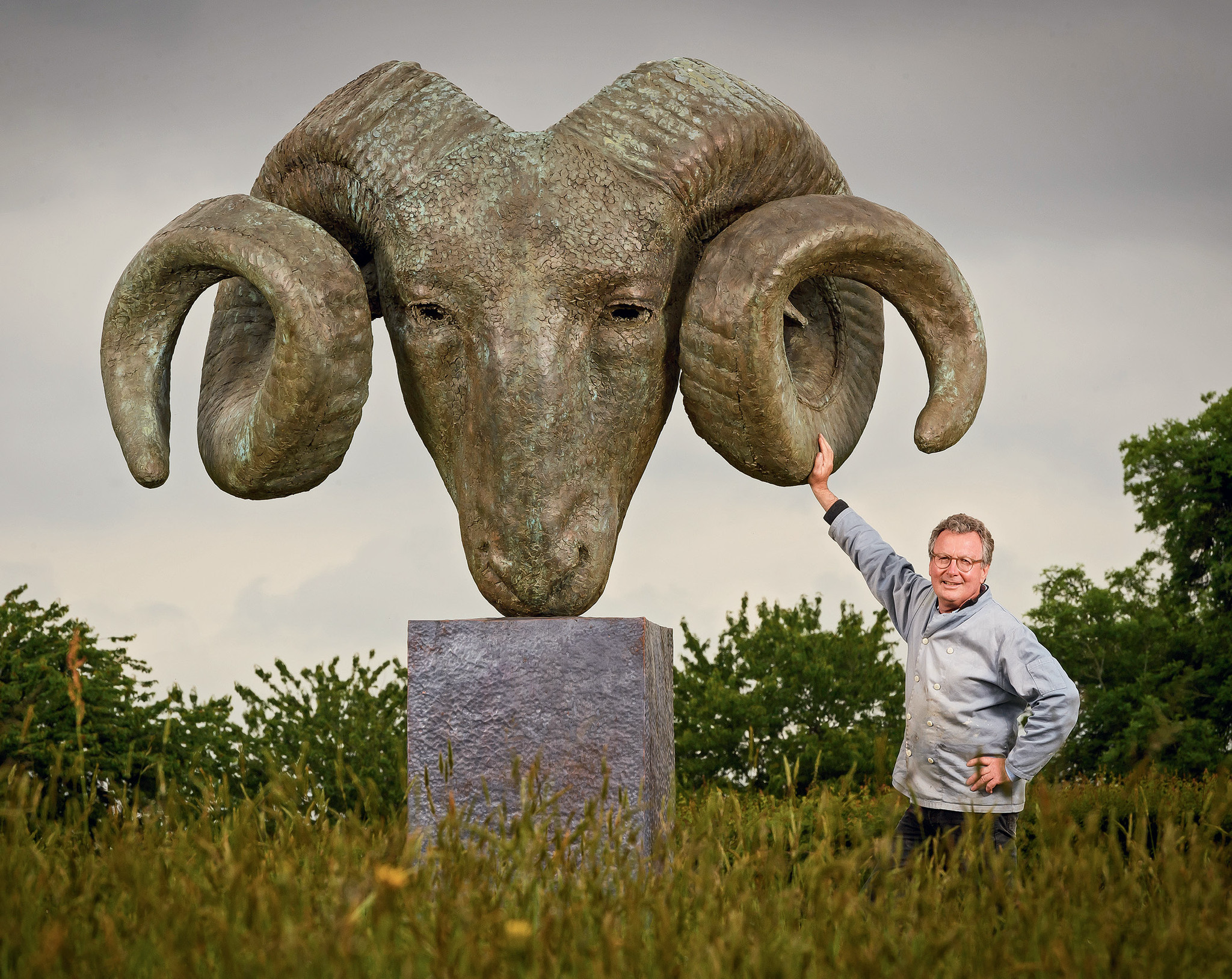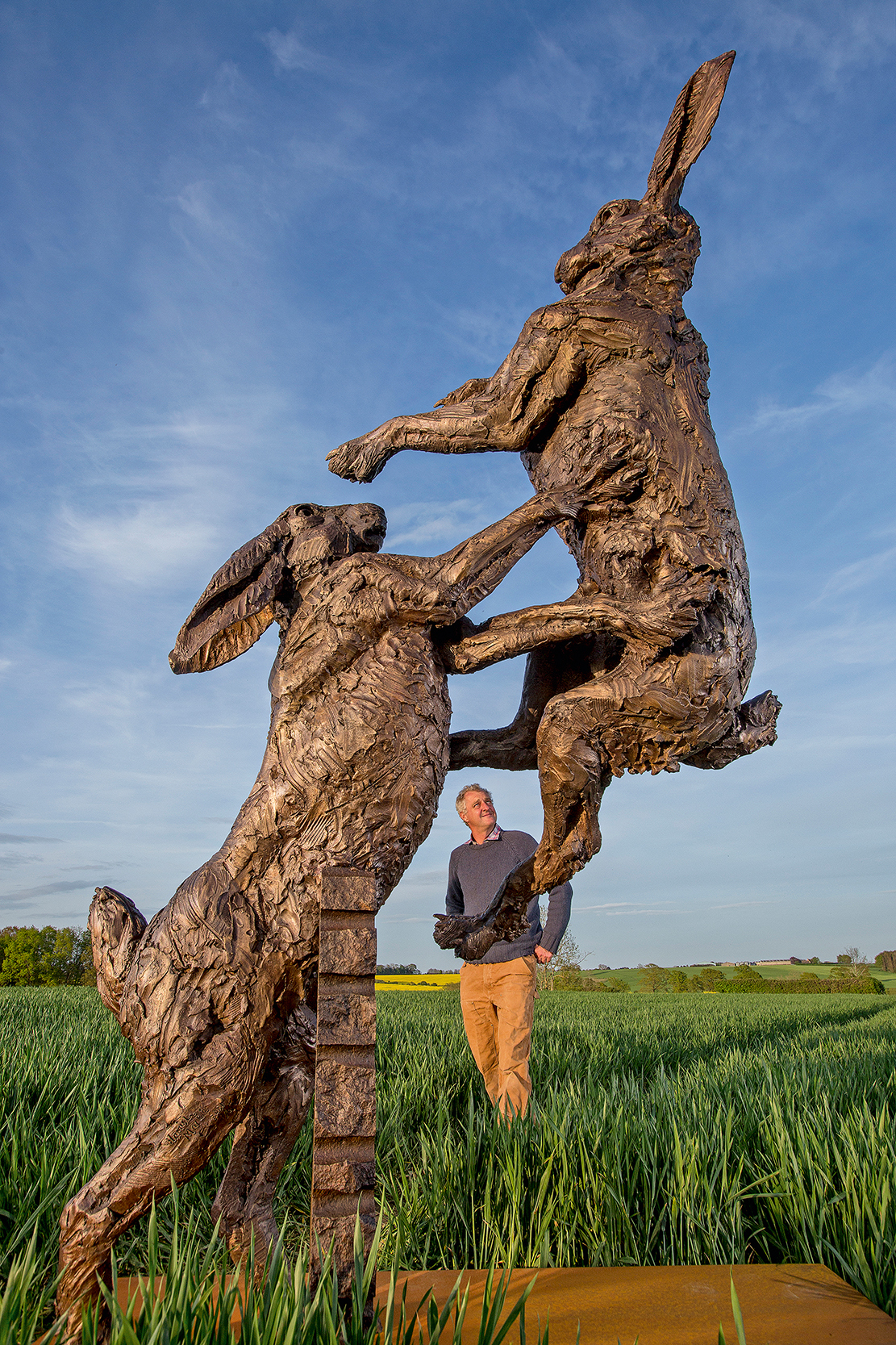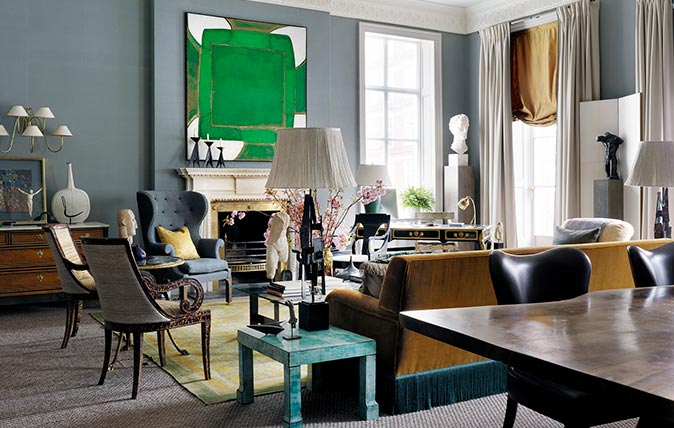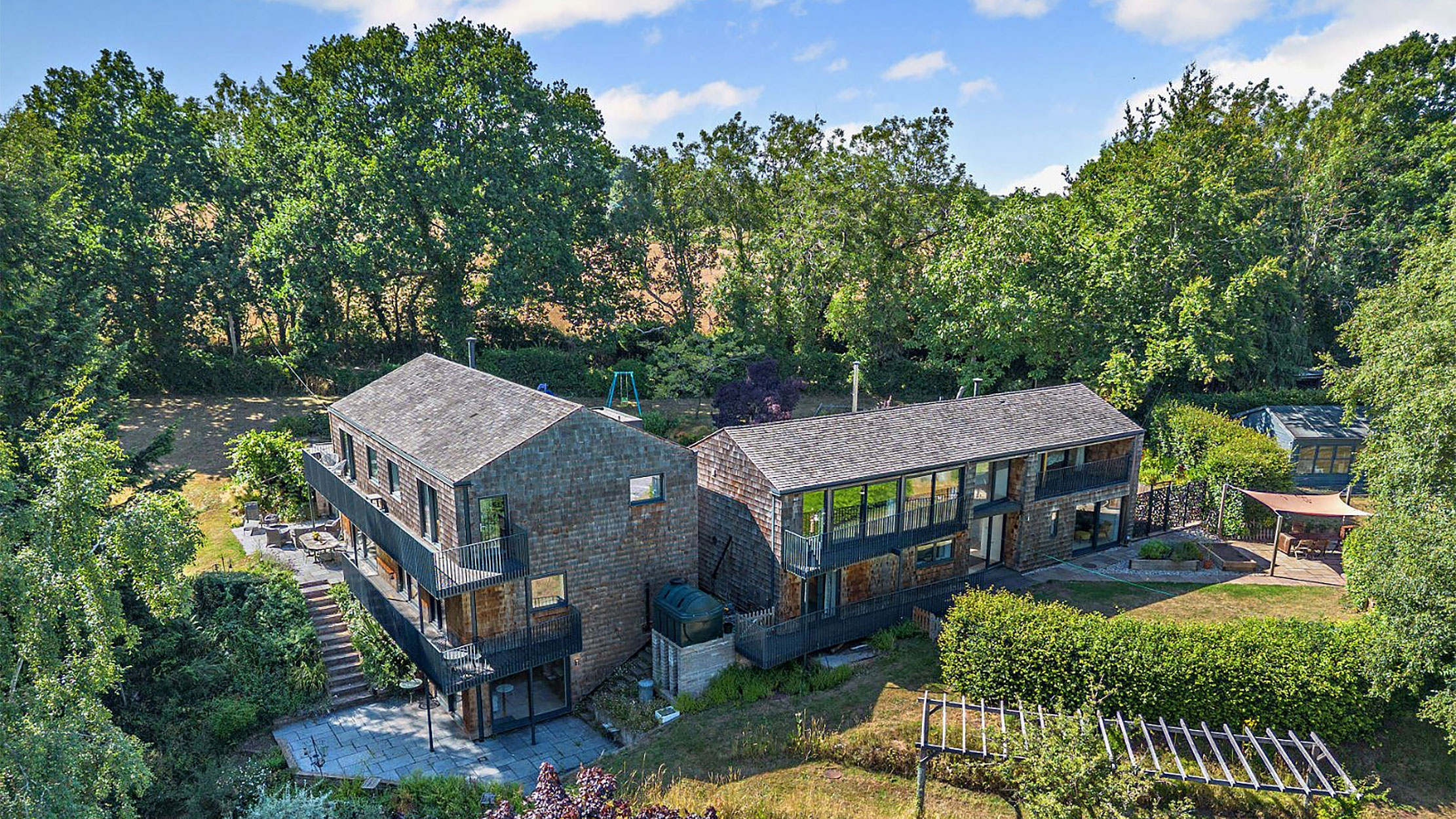The extraordinary new wave of garden sculpture — and how to commission one of your own
A talking point that can inspire passions and transform a landscape, large-scale sculpture is increasingly valued by modern collectors. Anna Tyzack meets the artists bringing grand visions to life. Photographs by Joe Bailey and Mark Williamson.


With its swirling horns and omniscient gaze, David Williams-Ellis’s 26ft bronze ram will be seen from several fields away. The sculpture, which he created for a collector during lockdown and is now waiting to be cast, is one of many larger-than-life bronze pieces being installed in private gardens and public collections. ‘There has never been a better time to be a sculptor or a foundry,’ maintains Alexander Lumsden, an art historian for Bronze Age London, a foundry that has cast works by Antony Gormley. ‘People are realising the value that sculpture can bring: it’s a talking point; it engages people; it activates space.’
Helaine Blumenfeld, who shared a show with Henry Moore back in the 1980s and whose 16ft bronze Metamorphosis is now in situ at Canary Wharf, London E14, agrees that Britain is in the throes of a bronze renaissance, precipitated by the pandemic. During lockdown, she received emails from members of the public telling her that her sculpture spoke to them. ‘Never in my 50-year career have I got so much response; sculpture gives us access to our emotions in a way no other art form does,’ says Mrs Blumenfeld.
Mr Lumsden has noted a resurgence in figurative bronzes produced in the age-old lost-wax method, where a metal duplicate of the original clay (or plaster) is cast from a mould created using a wax model, which melts away before casting. He’s also seeing more works created digitally using three-dimensional printing processes. ‘At foundries, you get to witness the sculptural zeitgeist first hand,’ he explains. ‘For a new generation of collectors, bronze resonates: it makes you feel something, it handles being outdoors and you only have to touch it to feel how precious it is.’

It can be a fraught operation getting a bronze sculpture in place in the landscape. Abby Hignell, director of Hignell Gallery, a specialist sculpture gallery in Mayfair, has set monumental bronzes on clifftops and in sunken courtyards. ‘I installed one at a watermill, which required a temporary bridge to carry not only two tons of bronze, but also the cranes needed to erect it,’ she remembers. ‘The result is spectacular: sculpture is such a fantastic way to engage with an open-air space and it changes each day through the seasons.’
Foundries are busier than ever, despite the fact that production costs are rising; the casting process alone for a life-size portrait head costs about £1,500. It will be a while, however, before Britain’s appetite for bronze catches up with that of Ancient Rome: Pliny the Younger, writing in about AD100, confirmed that Delphi, Athens and Corinth each contained more than 3,000 monumental bronzes — the UK today has only 800.
‘It’s taken a long time for people to once again see that it can be restorative and regenerative,’ Mrs Blumenfeld believes. ‘There’s something magical about the fact that ancient bronzes have been found in perfect condition at the bottom of the sea.’
How to commission outdoor sculpture
- Find a sculptor whose work excites you and who you feel is excited by your commission. They will relish the opportunity to respond to location and create on a grand scale
- If you don’t have someone in mind, the Royal Society of Sculptors has a useful search tool on its website (www.sculptors.org.uk) or you could contact a specialist sculpture gallery, such as Hignell or Sladmore
- Meet the sculptor. Some prefer you to liaise with their gallery initially; others welcome you to their studios by appointment. Take along any preliminary ideas or inspirations you have. Don’t worry if you don’t have specific subject matter in mind: consider the emotion you want your sculpture to inspire or the view you want it to frame
- The artist (or gallery) will outline the creative process and discuss scale, patina and how the work will be placed on its base
- Prices are based on the current market for their work and echo those achieved for related works, taking into account the foundry costs, which vary depending on the complexity and scale of the cast

Ablington Manor: A magnificent house and gardens almost untouched by the passing of time
Ablington Manor: A magnificent house and gardens almost untouched by the passing of time
Exquisite houses, the beauty of Nature, and how to get the most from your life, straight to your inbox.

Credit: Simon Brown
The beautifully symmetrical London drawing room of interior designer Douglas Mackie
Symmetry is regarded as the secret to creating a calm, coherent space, but for many designers, it’s more about creating
-
 A country home that comes with a perfect lifestyle business: one of Britain's oldest vineyards
A country home that comes with a perfect lifestyle business: one of Britain's oldest vineyardsAstley Vineyard in Worcestershire, and the lovely house that it comes with, are looking for a new owner.
-
 Making space in a Georgian terraced Chelsea cottage
Making space in a Georgian terraced Chelsea cottageGuy Goodfellow removed an internal wall to transform the sitting room of this Georgian terrace
